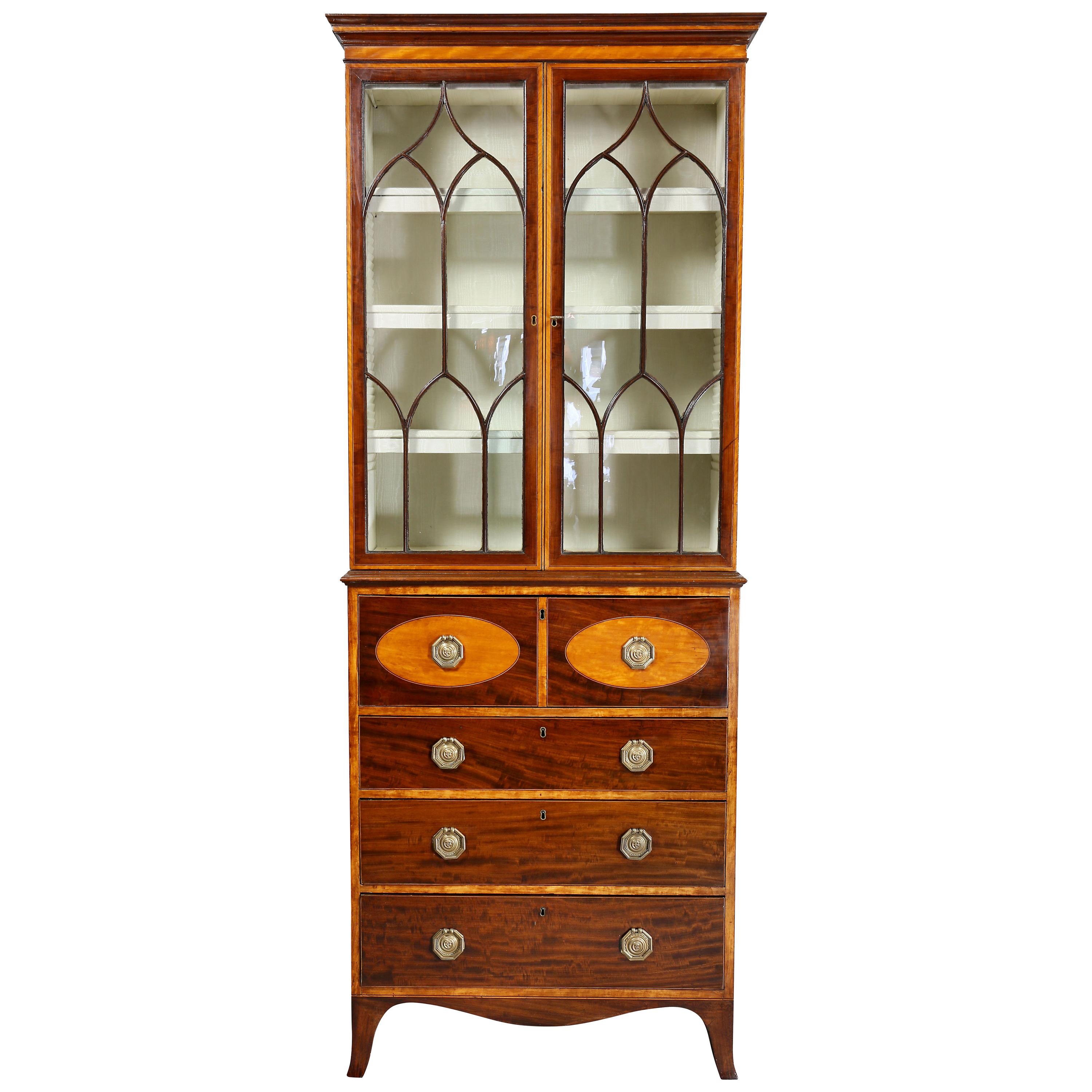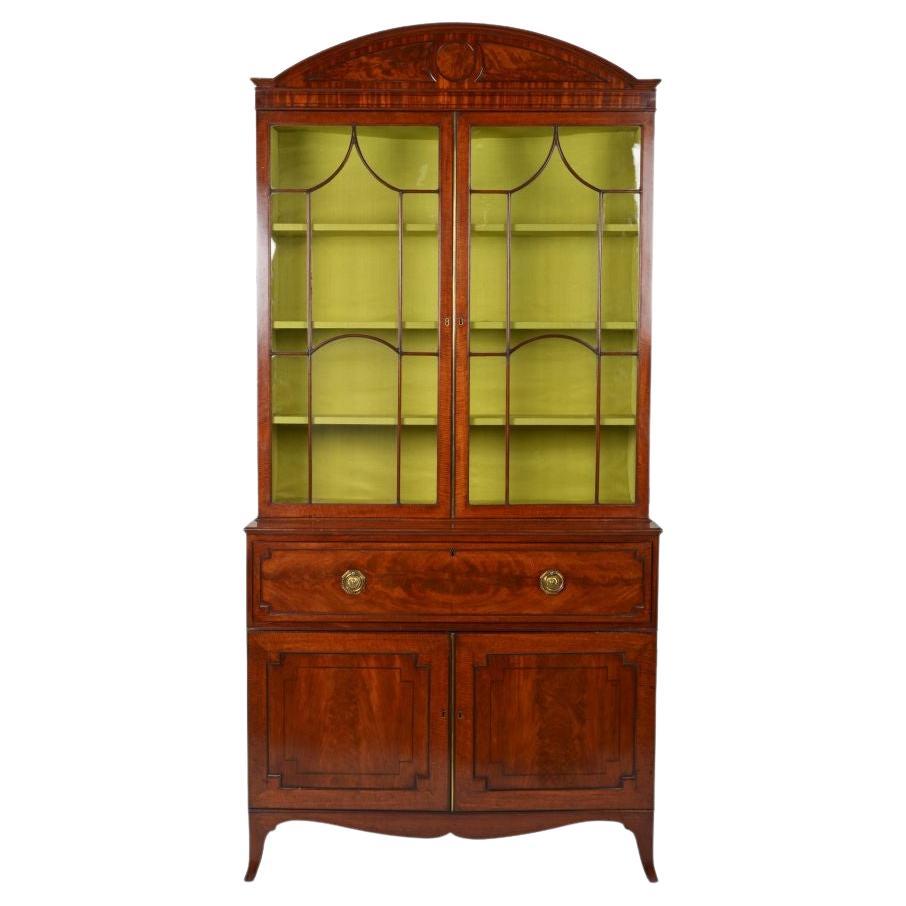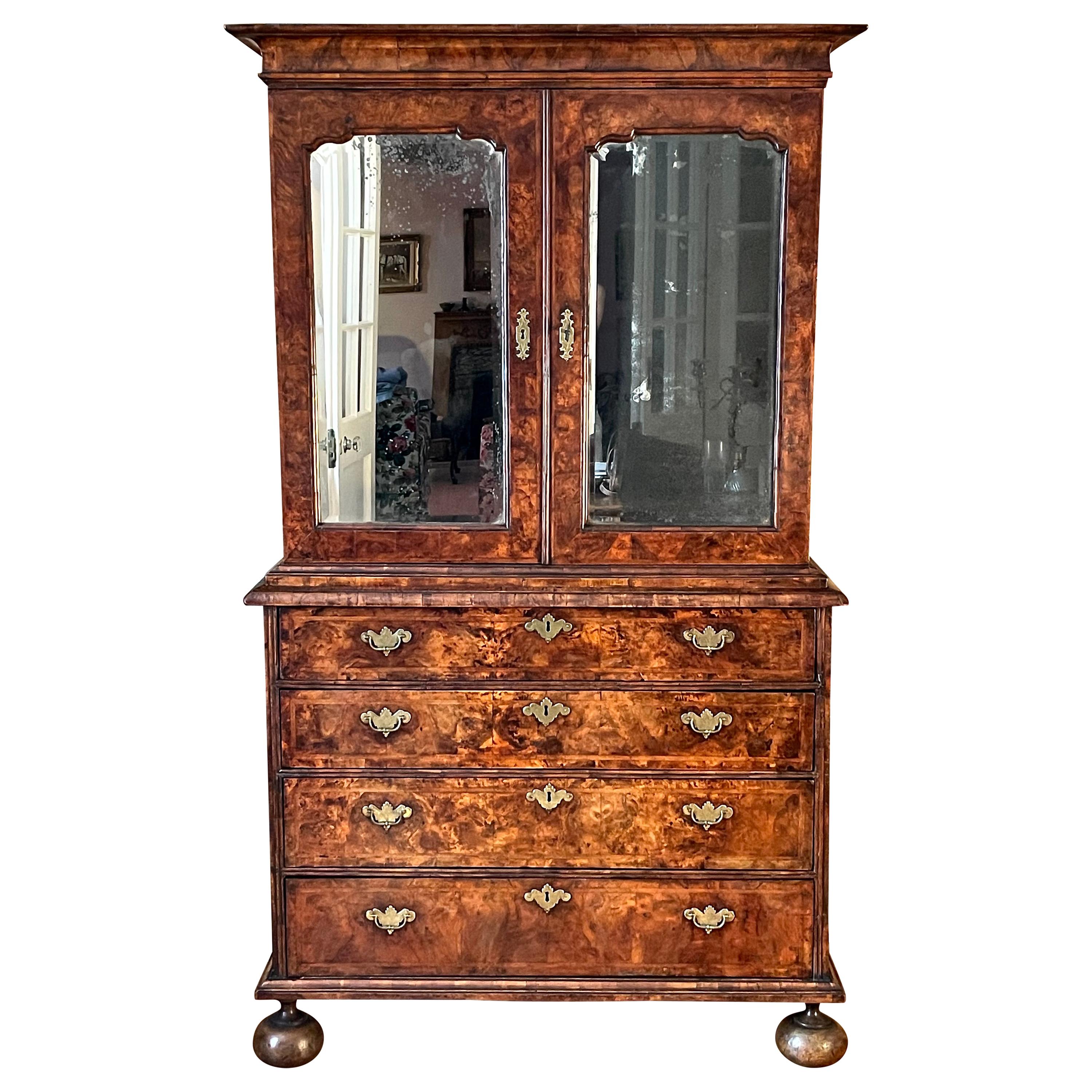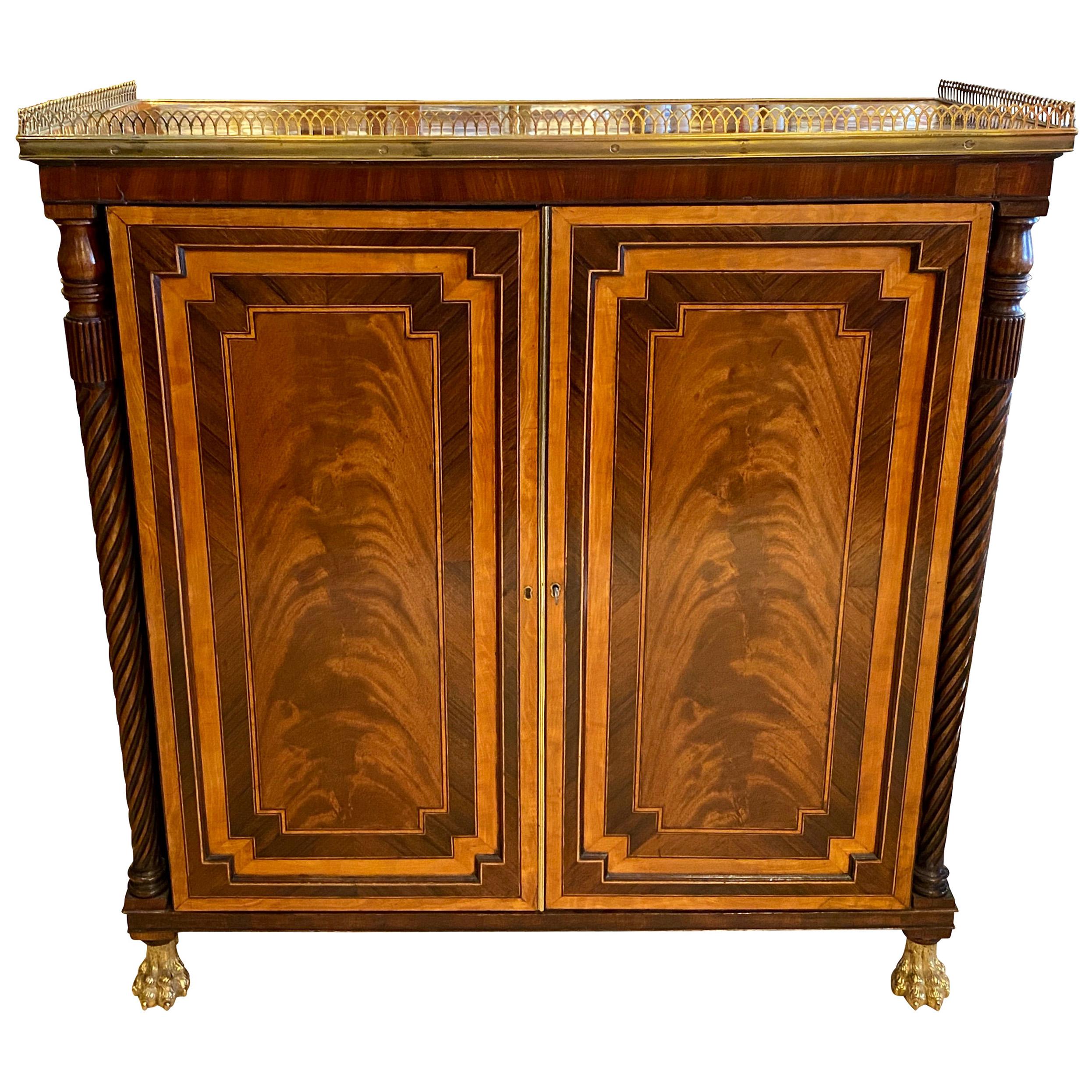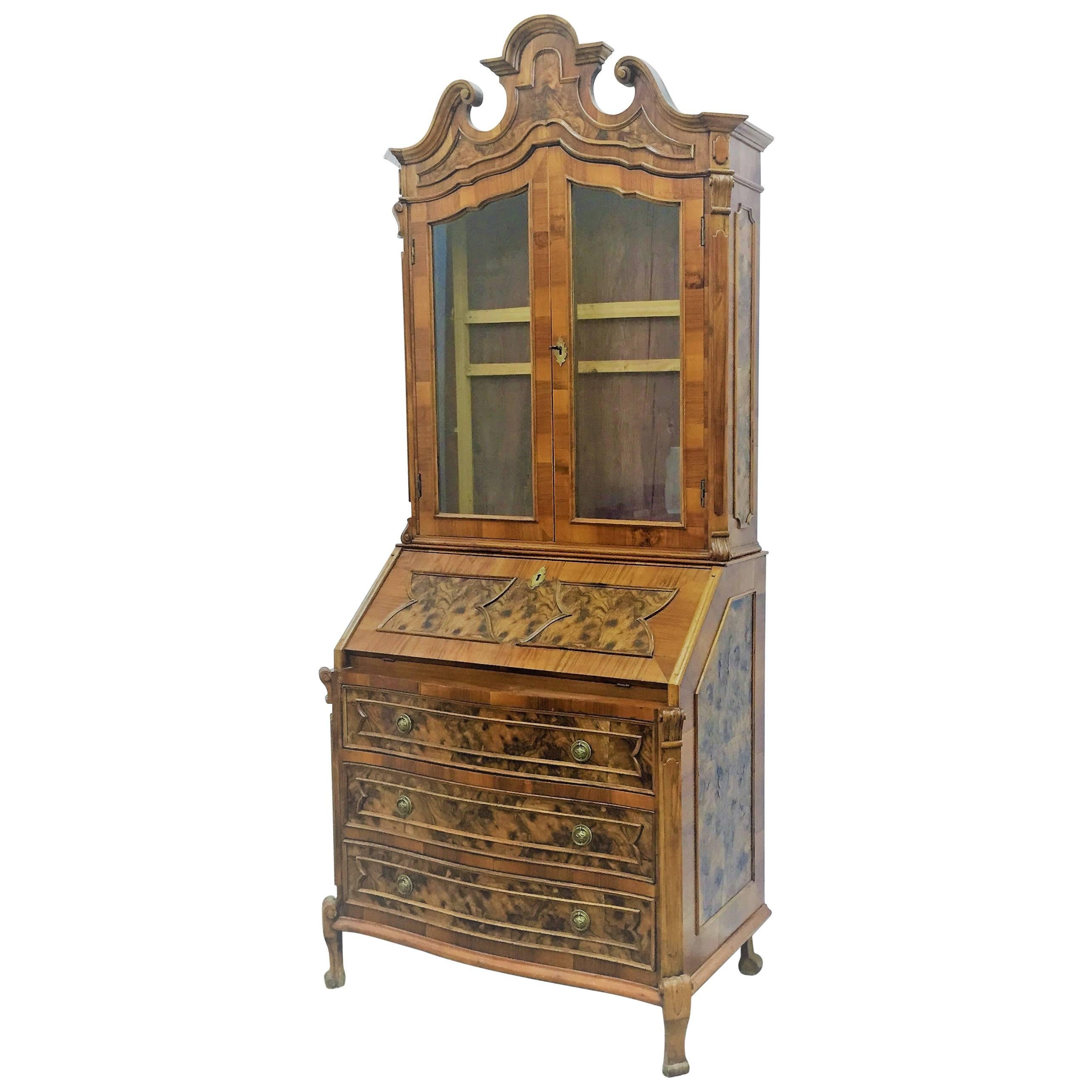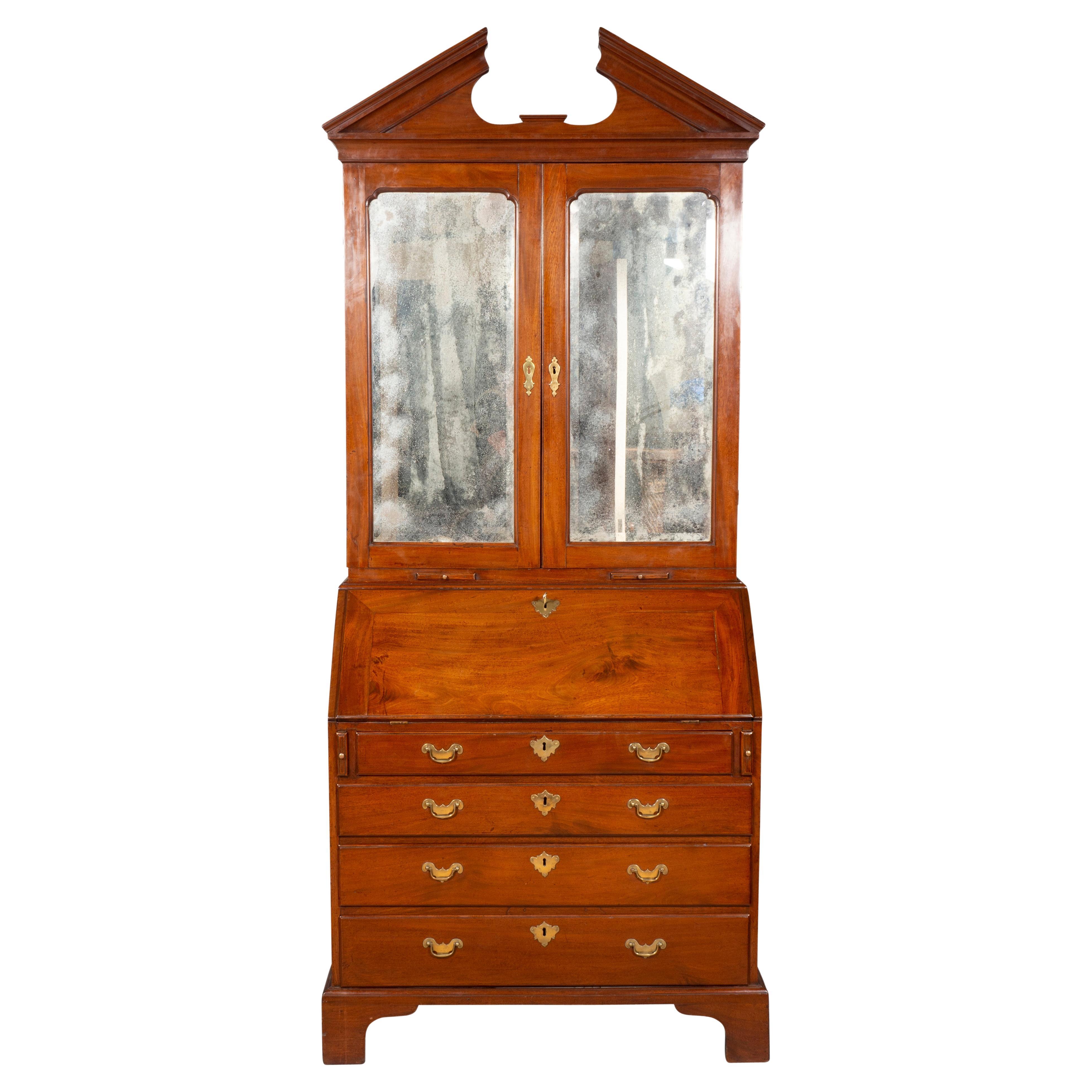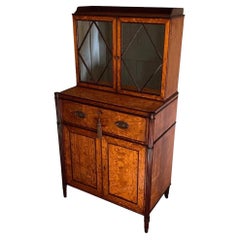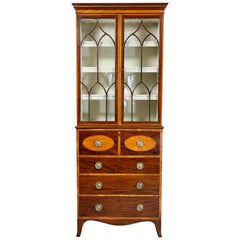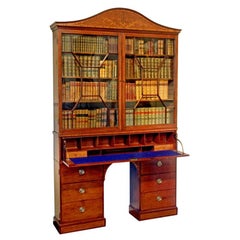
George III Period Satinwood and Mahogany Secretaire Bookcase Cabinet, shallow
View Similar Items
1 of 15
George III Period Satinwood and Mahogany Secretaire Bookcase Cabinet, shallow
About the Item
- Dimensions:Height: 92 in (233.68 cm)Width: 55 in (139.7 cm)Depth: 11 in (27.94 cm)
- Style:George III (Of the Period)
- Materials and Techniques:
- Place of Origin:
- Period:1780-1789
- Date of Manufacture:circa 1785
- Condition:Wear consistent with age and use. With an excellent colour throughout.
- Seller Location:London, GB
- Reference Number:Seller: 90041stDibs: LU9713777023
You May Also Like
- Fine George III Period Satinwood Secretaire CabinetLocated in Lymington, GBAn exceptional English Sheraton period satinwood secretaire cabinet. Attributed to Gillows. Late-18th century, George III, ca 1790. Measures: H 59 1/2’’ (151 cm) W 30’’ (76 cm) D 19’’ (49 cm). This small, beautifully-proportioned, and sophisticated antique writing cabinet...Category
Antique Late 18th Century English George III Secretaires
MaterialsSatinwood
- Fine George III Diminutive Mahogany and Satinwood SecretaireLocated in Essex, MAWith rectangular cornice over a pair of gothic mullioned doors enclosing a fitted interior, the base with drawer enclosing a fitted desk interior all over three drawers ending on spl...Category
Antique 1790s English George III Secretaires
MaterialsMahogany
- A fine late George III satinwood and snakewood secretaire cabinetBy George SimsonLocated in Lymington, HampshireA fine late George III satinwood and snakewood secretaire cabinet, attributed to George Simson of London, of rectangular form, the upper section with a pair of glazed doors with fine...Category
Antique Early 18th Century English George III Secretaires
MaterialsSatinwood
- George III Mahogany Astral Glazed Secretaire BookcaseLocated in Basingstoke, HampshireAn early 19th century astral glazed bureau bookcase of large proportions. Displaying a pair of astral glazed doors. The base houses four long drawers, on...Category
Antique Early 19th Century British George III Secretaires
MaterialsMahogany
Unavailable$1,874 - Stunning 18th Century George III Period Mahogany Secretaire Library BookcaseLocated in Petworth,West Sussex, GBA stunning 18th century, George III period mahogany secretaire bookcase . Well proportioned mahogany bookcase with glazed 2-door cabinet over a set of 14 oak lined drawers base with a fitted fall-front secretaire writing drawer, raised on the original ogee bracket feet. The well fitted secretaire writing drawer with multiple interior very fine oak lined drawers and door. The glazed bookcase top fitted with 2 compartments each with three adjustable bookshelves. Superb all original piece of furniture dating from 1780. Great quality! A good piece of Georgian antique furniture. Complete with working locks and key. The dimensions are: Height: 237cm (93.3in) Width: 161cm (63.4in) Depth: 54cm (21.3in) This Georgian period antique...Category
Antique 18th Century British George III Bookcases
MaterialsBrass
- King George I Ambassadorial Secrétaire-CabinetLocated in New Orleans, LAThis highly important secrétaire-cabinet was crafted for and specially ordered by King George I for the British Ambassador to Russia. From its craftsmanship and materials to its exceptional artistry, it is a work of royal and historic significance that exudes power in each and every detail. The broken pediment at its apex features the simplified royal coat of arms bearing the king’s crown, while the interior is adorned by portraits of the British Royal Family. Placed within the ambassador’s St. Petersburg home, this entirely unique piece of furniture would have been a potent reminder of England's grandeur and political importance. Relations between England and Russia during this period were at an all-time high. Peter the Great had traveled to England in 1698 as part of his widely known “Grand Embassy” tour, wherein he attempted to gain foreign support against the Ottoman Empire. He spent a period of nearly four months there, meeting with King William III and his court on numerous occasions. Noted academic Arthur MacGregor wrote concerning the impact of the trip, “For two decades following Peter's visit, British influence in Russia reached a peak. It manifested itself in social custom, in craft practice and in ships and naval organization... it reached a significant sector of the population before relations cooled once again and the two nations pulled back from this era of unprecedented cordiality.” First and foremost, however, it is a reminder of British might and influence. By the reign of King George I, England had come into its own as a world power. Unique in its design, this cabinet is a reflection of the country’s might. It is crafted from the highest-quality solid walnut and burr walnut adorned by gilded lock plates and engraved hinges. The presence of ormolu at its apex and lining the doors was a rarity for this period, and its addition makes manifest the importance of the design. The outer doors open to reveal multiple interiors, including fifteen separate drawers around a central cupboard; the cupboard doors each bear mezzotint portraits of George I and his father, Ernest Augustus, Elector of Hanover. An etching after the portrait of George I dating to circa 1716 is in London’s Royal Academy. A second, inner pair of doors are adorned by mezzotints of the Prince and Princess of Wales (later Queen Caroline and George II), which are both after portraits by Sir Godfrey Kneller dated 1716 in the Royal Collection. A final portrait is revealed on the very interior of the cabinet, where a mezzotint of Frederick, Anne, Amelia and Caroline, children of the Prince of Wales, resides. An etching (circa 1715-1720) after this portrait can be found in the National Portrait Gallery (London). Apart from its abundance of royal portraiture, the cabinet features stunning painted decoration, including floral designs as well as clouds, birds and trees in a bucolic motif reminiscent of Eden. Its lower portion is a study in both form and function, featuring a fitted secrétaire-drawer above three additional drawers for storage. The cabinet appears in The Shorter Dictionary of English Furniture by R. Edwards from 1964, a text that is regarded as the bible of British furniture design. Edwards describes it as a “writing cabinet...given by George I to the British Ambassador at the Russian court.” The cabinet was likely made for the 18th-century German diplomat and writer Friedrich Christian Weber, who represented English interests at the Russian court from 1714 until 1719. Although Weber’s tenure as ambassador was relatively short, while in St. Petersburg, he authored his account entitled Das veraenderte Russland (The Present State of Russia), which was published in three volumes in 1721, 1739 and 1740. It may, however, also have been made for George Douglas, 2nd Earl of Dumbarton, who served as ambassador alongside Weber in 1716. Diplomatic relations ceased between the two countries in 1721. In 1928, the cabinet appeared for sale at the International Exhibition of Antiques & Works of Art in Olympia. It had previously been in the collection of the Woltner family of Bordeaux, the celebrated vintners who owned the estate Château Laville Haut-Brion and produced wine of the same name. According to the family, Monsieur Woltner was given the cabinet as a gift from an aunt who lived in Russia for many years. After leaving the Woltner collection, the cabinet was acquired by William Berry...Category
Antique 18th Century English Georgian Secretaires
MaterialsBrass
Recently Viewed
View AllMore Ways To Browse
Shallow Drawer Cabinets
Antique Mahogany Secretaire Bookcase
Shallow Shelves
George Iii Three Drawer
English Geometric Cabinet
Corner Cabinets Pair Mahogany
English Mahogany Secretaire
English 18th Century Bookcase
Shallow Kitchen Cabinet
Pair English Bookcases
Pair Of English Bookcases
Glazed 18th Century Bookcase
Brass Inlaid Bookcase
Antique Mahogany Collectors Cabinet
English Cabinet Pediment
Inlay Bear
Mahogany Arched Bookcase
Record Shelves

